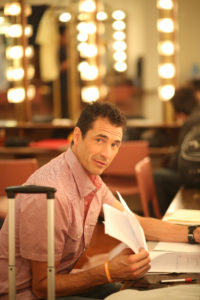Let’s say you’re going to run a game at a convention, or you want to introduce a new system to your regular players who may not continue beyond one session. That’s what I’m calling a one-shot for this article: a self-contained tabletop RPG session, where you don’t expect to return to the characters or world.
Since this is such a different experience than so many games, you’ll want to approach it differently:
Create interesting characters. Make sure the characters are vibrant, with stronger personalities than you’d normally make. Remember, the players will only have a few opportunities over the course of a few hours to really act out with that character, so the character needs to be strong, memorable, and easy to grasp.
Make sure the player characters’ goals relate to each other. With so little time, it’s easy for each PC to just act in his or her own self-interest. Each PC should have a specific bond to at least one other PC (“Sara saved Melanie’s life last week,” “Carroll is Johann’s best friend,” “Fred is so amazed by Tara’s mystical abilities that he trusts them implicitly”). This will make it easier for the players to include each other and back each other up.
Set the session at an interesting location. Again, since you have so little time, make sure it’s a place that the players can latch onto easily and won’t soon forget. Make a little more bizarre or off-kilter than your typical place. For a crime investigation game, place the murders at a carnival. Set an epic fantasy RPG in a crystal tower or an Aztec-style jungle city.
Also give the characters a strong reason to be at that location. Since you’ll only be playing this once, you can tie the characters closer to the backstory. Maybe the crime scene investigators are all employees of the carnival. Maybe the fantasy explorers were captured and will be sacrificed to the sun god at dawn by the Aztec-style civilization.
Now that you have characters and location, you’ll have a good idea of the basic building blocks of the scenario: the big problem that the PCs have to solve, the obstacles in their way, and the various ways they can solve the problem.
This gets to one of the toughest things about one-shots: time. Some players will breeze through a scene that you thought would take an hour, while others will draw out a scene you thought would pass quikcly. Make sure you create more content than you think you’ll need, but modularized. In other words, if you can think of the session as a series of scenes, set up more scenes than you’ll probably need. Just make sure that you can drop a few scenes to make the session shorter than you think you’ll need.
Now that you have a good idea of all the elements of your session, you can think about props. A physical prop or two pulls players into the fictional world (which can be particularly helpful in a noisy, distracting convention environment). This can be as “simple” as a map or letter printed onto a piece of paper that you stain in a tea bath to jewelry representing magical artifacts or talismans (craft stores often sell inexpensive, fantastical jewelry in their make-your-own-jewelry aisle) to 3D printed objects like skulls. Of course, this is completely optional, but it’s worth looking over the adventure for items that you could easily fabricate or cheaply buy.
As you finalize the game and prepare character sheets, look for (or write) rules summaries that you can print and hand out to players. Keep these to one side of one piece of paper; just the core rules that the players are most likely to encounter. It can be terse, too. If you’re playing with a simple enough system, you might be able to include that on the character sheet itself!
And there you have it! That should ensure a fun session that fills its time nicely, where the players can dive deep into their characters and the setting.

![[Atom feed]](/user/themes/geek-archaeology/images/atom-feed.png)
![[RSS feed]](/user/themes/geek-archaeology/images/rss-feed.png)
![[iTunes podcast feed]](/user/themes/geek-archaeology/images/itunes-feed.png)